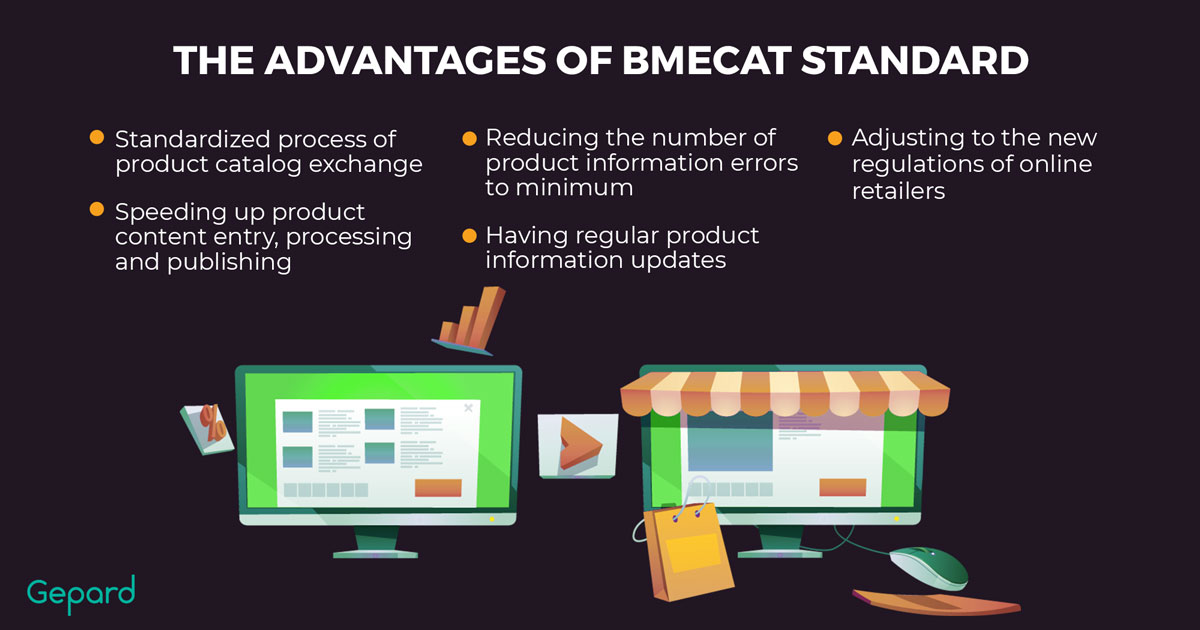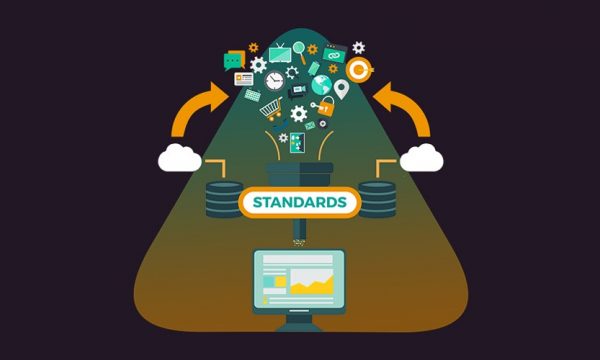BMEcat Data Standard For DIY Industry
Standardizing your product data with BMEcat can scale your business on the DIY market. It can help you provide potential customers with a holistic view of your goods.
This article will tell you essential information about the standard, starting with a definition and following with the benefits and steps for implementing it in your eCommerce.
What Is The BMEcat Data Standard?
You can download it from the official website; however, the guidelines are in German. If you need an English version, another organization — ETIM International — can help.
How BMEcat Standard Relates To ETIM International
ETIM International is an organization that supports product data standardization. Their own standard — ETIM — is used for classifying technical products.
Interesting fact: The abbreviation first meant Electrotechnical Information Model. Although it was later renamed into the European Technical Information Model, countries all over the world use this standard.
But what’s the connection? ETIM International has also released a subset of the BMEcat 2005 version where users can define extensions and the country. You can also find downloadable supplier guidelines on their website which provide information in an internationally accepted format. At the moment, there’s a major 5.0 version available.
Why Use The BMEcat Data Standard
With the ever-increasing volume of products available on the market, it’s essential to provide high-quality data that describes them. That’s why you need a widely accepted standard like BMEcat that offers requirements for generating information about your products. Then, you can create a uniform catalog and distribute it to different media channels (e.g., printed catalogs or digital procurement solutions) without losing quality.
Why Is BMEcat Important In The DIY Industry
More and more people are interested in DIY products. Whether they have a crafts hobby, love gardening, or renovate spaces, it’s an industry where you can scale. But the process can be difficult if you have hundreds of positions and no system.

BMEcat guidelines will help you generate standard descriptions for all your items. They offer information about the key elements, such as keywords and classification, along with examples of what it should look like. This helps save time on constructing a uniform catalog that you can send to almost any handmade seller platform.
Who Else Should Use BMEcat?
The standard is primarily for manufacturers and service providers, but suppliers and other distributors should use it as well. For example, if each sales channel doesn’t conform to the same set of requirements, a producer will have to alter data before exchange – modify the description length or category. This wastes time and can still cause errors during data transfer, which is not good for product information quality.
Benefits Of BMEcat Catalog Data Standard
It is beneficial for all DIY suppliers and manufacturers. Here are a few advantages you can expect:
- Standardized exchange of product information – you won’t run into issues with misinterpreted data because it fits international requirements.
- Quick data entry process – the data follows one model, so filling in the blanks is faster than if you had to describe each product from scratch.
- Flexibility – it can be combined with other standards, such as ETIM or eClass.

Short BMEcat + ETIM Guidelines For DIY Suppliers
The ETIM BMEcat standard 5.0 guidelines clearly state that it’s essential for all levels of the supply chain to use standards because they allow uniformity. This means that any participant in the trade can use the same original data that won’t be misinterpreted at any moment during the transfer. And in turn, this should result in a higher quality of information that customers receive on their end of the deal.
Here, we’ll show a bit more of what the guidelines entail.
Supported Transactions
In this case, transactions mean the processing and transfer of catalog data. The standard has three such transactions:
- For transferring a new catalog to a data receiver/distributor;
- For notifying the receiver/distributor about updated information – new, changed, or deleted wares;
- For informing the receiver/distributor about updates in item prices.
These transactions allow you to keep a version history to track the changes in your catalog.

Requirements For Suppliers Catalog
There are mandatory and optional data fields according to version 5.0, and they are marked accordingly in the guidelines.
1. Recommended File Name
Example: Smith_Switches_New_2022-05-30.xml
- The file name includes the supplier’s name, the date when the file was generated, and the XML extension;
- Any spaces in the name are replaced with underscoring;
- The date follows the format yy-mm-dd;
- Updates have “New” after the name.
2. Catalog Content Guidelines
The following are a few dos and don’ts of the general content guidelines:
- Use ETIM for classification;
- Use BMEcat for catalog data;
- Use the language of the data receiver;
- Use the currency of the data receiver;
- Use the UTF-8 data set;
- Use country-specific guidelines for text fields;
- Don’t use any elements that aren’t mentioned in the ETIM guideline.
Country-Specific Regulations
For some countries, there are clarifications about the guideline regulations. For example, if the receiver is in the Netherlands:
- You can use up to 1000 characters in the descriptions but no HTML tags (length is not specified in general regulations);
- You should specify the country of origin where an ordered item will be sent from;
- You should avoid redundant information if a catalog contains more than one supplier.
How To Start Using BMEcat Standard?
If you haven’t used a standard before, the info may be a lot to process. But there are essentially two simple steps:
1. Partner With A PIM Provider
A PIM (product information management) system is a tool for managing product catalogs and distributing them to web stores and eCommerce platforms. A good one will also support the widely used standards.
2. Connect To BMEcat Format With The Help Of A PIM Solution
Once you choose PIM software that supports the format, select it as your connector. In Gepard PIM, you can also get our team to set up the catalog exchange with BMEcat or another connector.
How Gepard Solves The Issue Of Connecting To The BMEcat Standard?
With Gepard PIM, you can easily upload product data from your electronic catalog by adopting internationally recognized standards.
Gepard offers businesses, especially those with multiple suppliers, a seamless setup of BMEcat standard that has the following advantages:
- Standardized process of product catalog exchange;
- Speeding up product content entry, processing, and publishing;
- Reducing the number of product information errors to a minimum;
- Having regular product information updates;
- Adjusting to the new regulations of online retailers.
Such a functional connection, offered by Gepard, gives companies a guarantee of accurate product information that goes in compliance with the latest product data regulations. Businesses can not only transform their product data to an internationally recognized standard but also seamlessly distribute this information to any number of sales channels and platforms.
Read more about eCommerce data standardization:
BMEcat Standard FAQ
What Is The Latest Version Of BMEcat?
The latest version of the BMEcat catalog data standard is 5.0, and it’s available from the ETIM International website. You can download it with this direct link.
Which Standards Is BMEcat Compatible With?
It’s compatible with ETIM, eClass, and UNSPSC. Like ETIM, eClass is a classification system, but it isn’t specific to tech goods and services. eClass is also the only standard that complies with ISO.
UNSPSC is a five-tier taxonomy used for classifying products and services from a variety of industries. Each tier is represented by a digit code.
What Does A BME Company Do?
BME is the German abbreviation for the Federal Association of Materials Management, Purchasing, and Logistics. The company aims to promote a scientific approach, but it’s also concerned with sustainable procurement, digital supply chains, public procurement, and other related topics.
Standardize And Improve Your DIY Business
The end goal of product data standards, BMEcat in particular, is to satisfy the demand for high-quality product information, including in the DIY industry.
Standardizing is not rocket science. You can make the transition simple and smooth by partnering with a PIM provider. Software like Gepard PIM can help speed up the process of standardizing your catalog with BMEcat and other major ones like ETIM and eClass.
Better yet, if you don’t want to concern yourself with the technicalities, our team will help you set up the process. Simply fill out the contact form to view a free personalized demo of the system and find out more about the benefits of Gepard PIM.



